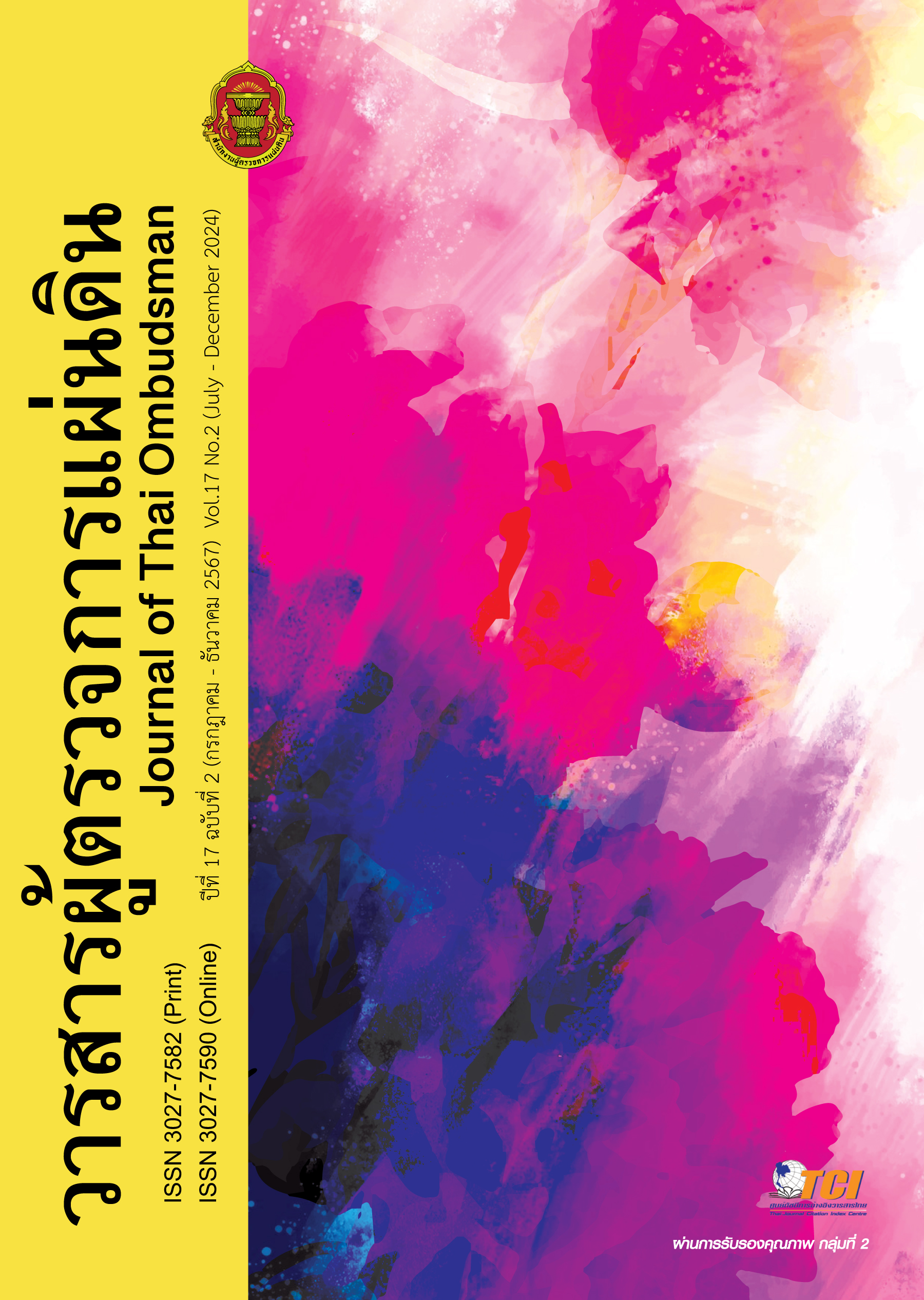Guidelines for Developing Communication Channels of the Thai Parliament Based on International Case Studies
Keywords:
Communication, Thai Parliament, Communication Channels, Open ParliamentAbstract
This article examines about the current communication practices of the Thai Parliament, highlighting how communication serves as a tool for conveying ideas and engaging public awareness. Effective government communication requires modern, rapid, and participatory channels to inform citizens of various policies successfully. Open access to government information and active communication with the public are mechanisms that facilitate a shift from a democracy focused on monitoring and accountability to one that encourages public participation. This also enhances transparency in the exercise of government authority. In recent years, the Thai Parliament has developed diverse communication channels to engage citizens in the legislative process. However, with today’s global changes, the Parliament must adopt new methods for communicating daily parliamentary activities to ensure public awareness. This includes making parliamentary meetings, activities, and committee deliberations accessible, thereby raising operational standards within the institution. Furthermore, this study draws on cases of foreign parliaments that have developed highly effective communication strategies, enabling public participation and enhancing transparency in parliamentary processes. These cases offer a framework for improving the Thai Parliament’s communication methods to increase efficiency and foster greater public involvement.
References
ณัฐาศิริ สุขภาพ. (2551). การบริหารการจัดการสถานีโทรทัศน์รัฐสภาเพื่อส่งเสริมการมีส่วนร่วมทางการเมืองของประชาชน. วิทยานิพนธ์วารสารมหาบัณฑิต (สื่อสารมวลชน) คณะวารสารศาสตร์และสื่อสารมวลชน มหาวิทยาลัยธรรมศาสตร์.
ณัฐพร บูรภักดิ์. (2550). บทบาทของสถานีวิทยุกระจายเสียงรัฐสภาภายหลังการปฏิรูปสื่อ. รายงานโครงการเฉพาะบุคคล. วารสารศาสตรมหาบัณฑิต (การบริหารสื่อสารมวลชน) คณะวารสารศาสตร์และสื่อสารมวลชน มหาวิทยาลัยธรรมศาสตร์.
ทศพล เชี่ยวชาญประพันธ์. (2560). รัฐสภาอัจฉริยะ (Smart Parliament) กับการส่งเสริมหลักนิติธรรม : กรณีศึกษาของออสเตรเลียและข้อเสนอเบื้องต้นสำหรับประเทศไทย. ค้นเมื่อ 22 มีนาคม 2566 จาก https://www.ega.or.th/th/content/890/11939/
ทิพย์ศริน ภัคธนกุล และทศพล เชี่ยวชาญประพันธ์. (2566). การเปิดเผยข้อมูลภาครัฐสู่การเป็นรัฐบาลแบบเปิด : นวัตกรรมการบริหารราชการแผ่นดินยุคดิจิทัลของประเทศไทย. ค้นเมื่อ 22 มีนาคม 2566. จาก https://www.dga.or.th/wpcontent/uploads/2016/11/file_8fa586cf682605b8cbaf62cefcf901c0.pdf
สัพพัญญู อนุพันธ์. (2545). การบริหารงานสถานีวิทยุกระจายเสียงรัฐสภา. รายงานโครงการเฉพาะบุคคล หลักสูตรวารสารศาสตรมหาบัณฑิต (การสื่อสารภาครัฐและเอกชน) คณะวารสารศาสตร์และสื่อสารมวลชน มหาวิทยาลัยธรรมศาสตร์.
สุวิจักขณ์ นาควัชระชัย. (2558). บทบาทของรัฐสภาในการเสริมสร้างประชาธิปไตยแบบมีส่วนร่วมทางการเมืองของประชาชน. วารสารศาลรัฐธรรมนูญ, 17(49), 170-185.
Cristina Leston Bandeira and David Bender. (2001). How deeply are Parliaments Engaging on Social Media?. ResearchGate, October, 1-18.
Danny Hastings. (2023). C-Span Cameras on the House Floor. Retrieved January 25, 2023 from https://www.closeup.org/c-span-cameras-on-the-house-floor/.
David Hendy. (2023). Broadcasting of Parliament. Retrieved May 22, 2023, from https://www.bbc.com/historyofthebbc/100-voices/elections/broadcasting-parliament/.
Democratic Audit. (2014). Parliaments use social media mainly as a reporting tool rather than for public engagement. Retrieved March 25, 2023, from https://www.democraticaudit.com/2014/02/26/parliaments-use-social-media-mainly-as-a-reporting-tool-rather-than-for-public-engagement/.
Inter- Parliamentary Union. (2022). Global Parliamentary Report 2022 : Public engagement in the work of parliament.
Inter-Parliamentary Union. (2023). Declaration on Parliamentary Openness. Retrieved October 31, 2023, from https://openingparliament.org/static/pdfs/english.pdf
Jaume Duch Guillot. (2008). Launch of Europarltv, the webtv of the European Parliament. The European Parliament, 17(9), 1-9.
Xavier Roques Geneva. (2006). Parliamentary relations with the media. Retrieved April 19, 2023, from https://www.asgp.co/node/29943
Downloads
Published
How to Cite
Issue
Section
License
Copyright (c) 2024 Office of the Ombudsman

This work is licensed under a Creative Commons Attribution-NonCommercial-NoDerivatives 4.0 International License.
- Content published in the journal is personal opinions of authors which the office of Ombudsman and the editorial team are not bound to be accordance with.
- Articles, content, images, etc. published in the Journal of Ombudsman are copyright of the Journal. If any person or entity wants to bring all or part of it to publish or to do any action. Must obtain written permission from the journal's first.



